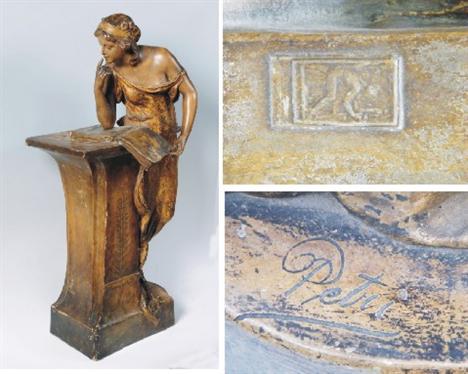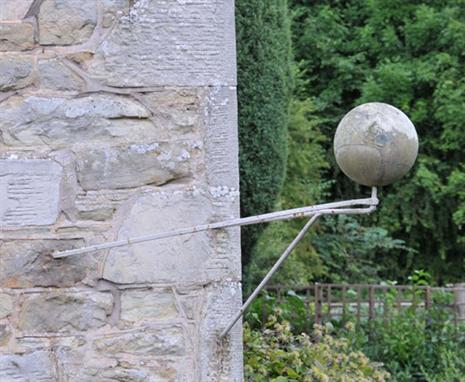629120 Preisdatenbank Los(e) gefunden, die Ihrer Suche entsprechen
629120 Lose gefunden, die zu Ihrer Suche passen. Abonnieren Sie die Preisdatenbank, um sofortigen Zugriff auf alle Dienstleistungen der Preisdatenbank zu haben.
Preisdatenbank abonnieren- Liste
- Galerie
-
629120 Los(e)/Seite
SILVERED METAL CEREMONIAL STAFF OR KHATVANGA with flaming finial above three carved human heads, (fresh, dried and a skull), symbolizing the conquest of the three poisons of lust, hate and delusion, 47cm high; a painted model of a `Terracotta Warrior`, 38cm high; and an Egyptian painted wooden panel fragment, 20cm wide (3)
BRASS CASED COMPASS BY TROUGHTON & SIMMS, LONDON, 19TH CENTURY raised on a socle foot, underside impressed `Drygas, Lyon`; together with a set of brass scales and weights; two early 19th century lead covered tobacco boxes; a copper miniature model of a ten gallon hat ; and a silver cigarette case (6)
A detailed display model of the Cunard Liner RMS Aquitania built by D. Whitty, finished in Cunard livery and mounted on four turned brass columns, within a dark stained, four glass, wooden display cabinet, 58.5cm wide, 202.5cm long Note: Built by D. Whitty, with masts, rigging, anchors, capstans, deck rails, derricks and rigging, deck winches, companion ways, superstructure with bridge over passenger accommodation, deck lights, stayed funnels, the foremost with three-chime hooter, promenade and other decks, cranes, twenty-six lifeboats and thirty-four folding boats in chocks and davits and other details. The hull, with four four-blade propellers, rudder, bilge keels and boarding companionway, is finished in Cunard livery and mounted on four turned brass columns - 23 x 80 inches (58.5cm x 202.5cm). Display base with brass plate engraved `RMS Aquitania, Quadruple Screw Turbine Driven Cunard Liner, length 901ft, breadth 97ft, 5300 tons. Built by John Brown & Co., Clydebank. Model by David Whitty`. The Aquitania was the longest lived of that glamorous breed of ocean greyhounds. Cunard ordered her from John Brown`s Clydebank yards in December 1910 where she was launched on 21st April 1913. Registered upon completion at 45,647 tons gross, she measured 901 feet in length with a 97 foot beam and designed to cruise at 23 knots. Clearing Liverpool on 30th May for her maiden voyage to New York, she was only to complete three round trips before being requisitioned by the government in August 1914 upon the outbreak of the Great War. She began work transporting troops in the spring of 1915 until July 1920 where she returned to regular commercial sailings. Her splendid décor attracted passengers immediately and she became one of the most popular liners on the North Atlantic over the next two decades. In 1939 she was converted into troop transport for the second time in her life for the Second World War and spent the next eight years carrying 300,000 servicemen all over the world. 1948 found her ferrying war brides to Canada prior to being returned to Cunard for yet another post-war `austerity service`. After being refitted and repainted, but never restored to her former magnificence, she maintained a one-class Southampton to Halifax service for a further year and a half before being finally withdrawn in December 1949. The RMS Aquitania was scrapped in the spring of 1950. This saw the end of an era of the majestic `four-stackers`.
18th Century Dutch rectangular Box, with rounded ends, the hinged lid decorated with hunting scenes and inscribed, "James Thain", the base decorated with hunting and dancing scenes and engraved, "B.F.", 16cms, (6"), a bronze Figure of a seated Buddha, 9cms, (3½") and a bronze Model of a pagoda, 19cms, (7½"), (3).
-
629120 Los(e)/Seite








































